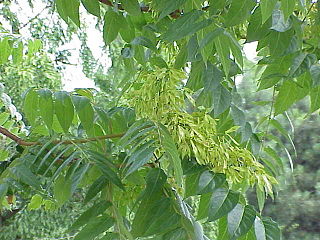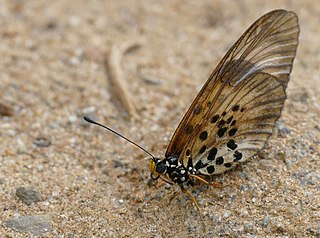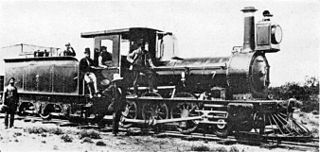
Pierre is the capital city of the U.S. state of South Dakota and the seat of Hughes County. The population was 14,091 at the 2020 census, making it the 2nd least populous US state capital after Montpelier, Vermont. It is South Dakota's 9th most populous city. Founded in 1880 on the Missouri River near the center of South Dakota, it was selected as the state capital when the territory was admitted as a state. Pierre is the principal city of the Pierre Micropolitan Statistical Area, which includes all of Hughes and Stanley counties.

Achatinidae is a family of medium to large sized tropical land snails, terrestrial pulmonate gastropod mollusks from Africa.

The National Association of Colored Women's Clubs (NACWC) is an American organization that was formed in July 1896 at the First Annual Convention of the National Federation of Afro-American Women in Washington, D.C., United States, by a merger of the National Federation of Afro-American Women, the Woman's Era Club of Boston, and the Colored Women's League of Washington, DC, at the call of Josephine St. Pierre Ruffin. From 1896 to 1904 it was known as the National Association of Colored Women (NACW). It adopted the motto "Lifting as we climb", to demonstrate to "an ignorant and suspicious world that our aims and interests are identical with those of all good aspiring women." When incorporated in 1904, NACW became known as the National Association of Colored Women's Clubs (NACWC).

The Sapotaceae are a family of flowering plants belonging to the order Ericales. The family includes about 800 species of evergreen trees and shrubs in around 65 genera. Their distribution is pantropical.

Corinnidae is a family of araneomorph spiders, sometimes called corinnid sac spiders. The family, like other "clubionoid" families, has a confusing taxonomic history. Once it was a part of the large catch-all taxon Clubionidae, now very much smaller. The original members of the family are apparently similar only in that they have eight eyes arranged in two rows, conical anterior spinnerets that touch and are generally wandering predators that build silken retreats, or sacs, usually on plant terminals, between leaves, under bark or under rocks.

The Simaroubaceae are a small, mostly tropical, family in the order Sapindales. In recent decades, it has been subject to much taxonomic debate, with several small families being split off. A molecular phylogeny of the family was published in 2007, greatly clarifying relationships within the family. Together with chemical characteristics such as the occurrence of petroselinic acid in Picrasma, in contrast to other members of the family such as Ailanthus, this indicates the existence of a subgroup in the family with Picrasma, Holacantha, and Castela.

Grantley Thomas Smart Goulding was a British athlete. He competed at the 1896 Summer Olympics in Athens.

Sideroxylon is a genus of trees in the family Sapotaceae described as a genus by Linnaeus in 1753. They are collectively known as bully trees. The generic name is derived from the Greek words σιδηρος (sideros), meaning "iron", and ξύλον (xylon), meaning "wood."
Ronga is a Bantu language of the Tswa–Ronga branch spoken just south of Maputo in Mozambique. It extends a little into South Africa. It has about 650,000 speakers in Mozambique and a further 90,000 in South Africa, with dialects including Konde, Putru and Kalanga.
Rhopalopilia is a genus of plants in the family Opiliaceae described as a genus in 1896.

Gigantatypus is an extinct late Maastrichtian sea turtle that lived in the southern regions of the Tethys Ocean about 100–120 kilometres (62–75 mi) off the north eastern margins of Cretaceous Africa immediately before the Cretaceous–Paleogene extinction events . Fossil remains of Gigantatypus are so far only represented in sediments from Jordan. Estimated at over 3.5 metres (11 ft) in length, members of this genus reached remarkably large proportions equivalent to that of or possibly even exceeding Archelon Wieland, 1896, considered as the largest marine turtles to ever roam the oceans of the world. Although Gigantatypus apparently did not survive the K/T boundary, which also was the fate of other gigantic marine turtles such as protostegids, other genera of Cheloniidae, though significantly smaller in size survived the mass extinction and continued on until the present day.

Acraea burni, the pale-yellow acraea, is a butterfly of the family Nymphalidae. It is found in Eswatini, South Africa, Zimbabwe, eastern Zambia and southern Malawi.

The South African Railways Class A 4-8-2T of 1888 is a steam locomotive class from the pre-Union era in the Colony of Natal.

The South African Railways Class 8D 4-8-0 of 1903 was a steam locomotive from the pre-Union era in the Cape of Good Hope.

The South African Railways Class 7A 4-8-0 of 1896 was a steam locomotive from the pre-Union era in the Cape of Good Hope.

The South African Railways Class 6A 4-6-0 of 1896 was a steam locomotive from the pre-Union era in the Cape of Good Hope.

Rauvolfioideae is a subfamily of the flowering plant family Apocynaceae. Many species are woody lianas, others are shrubs or perennial herbs.

The Cape Government Railways 1st Class 2-6-0 of 1876 by Beyer, Peacock and Avonside was a South African steam locomotive from the pre-Union era in the Cape of Good Hope.

The Metropolitan & Suburban 4-6-2T of 1896 was a South African steam locomotive from the pre-Union era in the Cape of Good Hope.

















